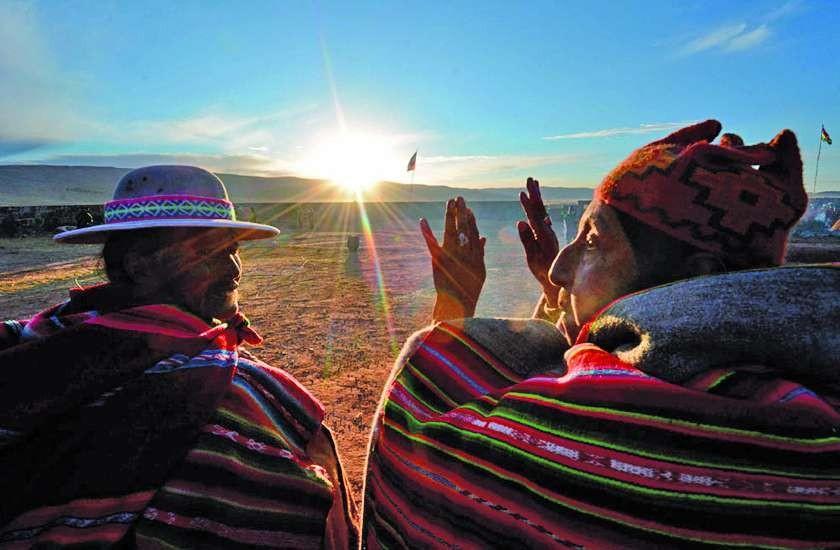RIO DE JANEIRO, BRAZIL – Bolivians in rural areas and some cities started this Sunday, August 1, the month dedicated to “Pachamama” or Mother Earth, with ancestral rituals and offerings to give thanks for the goods achieved in the last year and to ask for renewed prosperity.
August is the month chosen for the offerings because it concludes the first agricultural season in the Andean world and, according to the indigenous communities, at this time of the year, Mother Earth “opens her mouth” to feed herself with offerings that reward the fruits given and those she will give in the future.
Some offerings are delivered in homes and stores. Still, some offer them in sites considered sacred to the indigenous people, such as the Waraco Apacheta, located on the outskirts of El Alto, the neighboring city of La Paz, a trip that takes just over an hour by car.
Dozens of people arrived early in the morning to give thanks for what they had received and make new petitions to the Andean deities.

In the place, several “amautas” or indigenous wise men were waiting, ready to perform the rituals that are prayed in Aymara and Spanish equally, thundering conch shells and to chant “jallalla” or “viva” in Aymara.
One of the amautas is Mariano Condori, or Mariano of the Andes, who explained that since time immemorial, it had been known that in August, “the mouth” of the earth “opens,” and it is the right time to thank it.
“When they sow in the field, the plowing is done, the earth is broken, and the toads appear. That is called ‘marani’ and all that we venerate. Marani’ are those who give fertility to the land and also the blessing to each man or woman who offers a table,” Condori said.
In August, the “Pachamama” receives “with love and will” what is offered to her, so there is an ancestral tradition of making these offerings “to give her spirit and courage”, explained o Efe the “amauta” and spiritual guide Víctor Mamani. “We are thanking Mother Nature (and we ask) that all those illnesses go away,” Mamani added.
THE OFFERINGS
The main thing in an offering is the so-called “mesa” with sweets of different shapes and the “misterios”, small sugar boards with different images in which it is believed that the luck of the person making the offering comes out.
They also include wira k’oa, a sacred medicinal plant that grows in the Altiplano, incense, copal or aromatic vegetable resins, and llama fat.
Some offerings carry “sullus” or stuffed llama fetuses; others include various fruits.
On a piece of paper, the wira k’oa is first placed surrounded by colored wool, then the sweets, incense, llama fat, some coca leaves, and the “sullu” are placed.
When the offering is ready, it must be “ch’allar” or blessed with alcohol, wine, or beer and then placed on a pyre. The offered elements must be reduced to ashes that, once cooled, are buried or kept in a box.
The Waraco Apacheta is a special place because it has “illa” or power, and that is why people go there with faith to ask for good health, a house, a car, or prosperity, Condori said.
But it is not the only place where offerings are given, as there is also the site known as La Cumbre on the road to the subtropical zone of the Yungas and the Pajchiri and Lloco Lloco hills in the Altiplano paceño.
The important thing is to make the offering with faith and believe that you will receive what you are asking for, Condori concluded.

